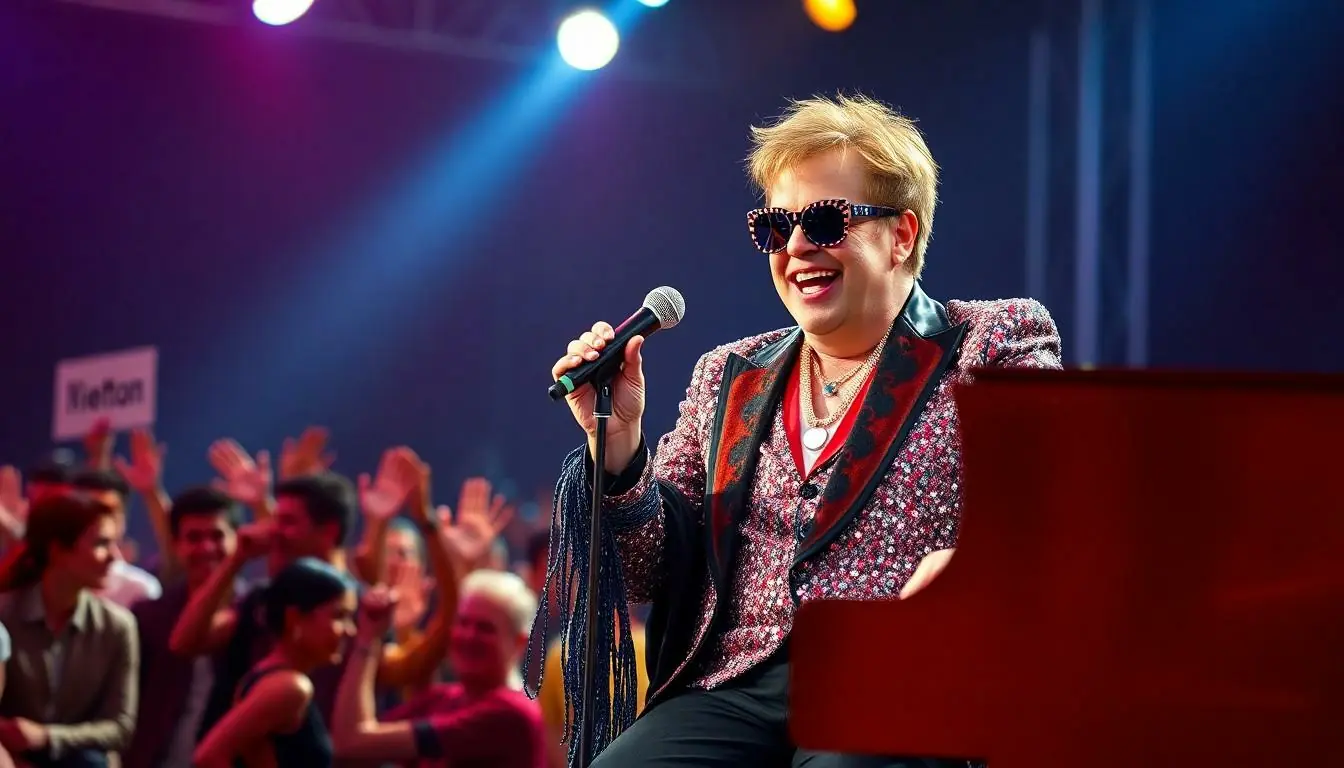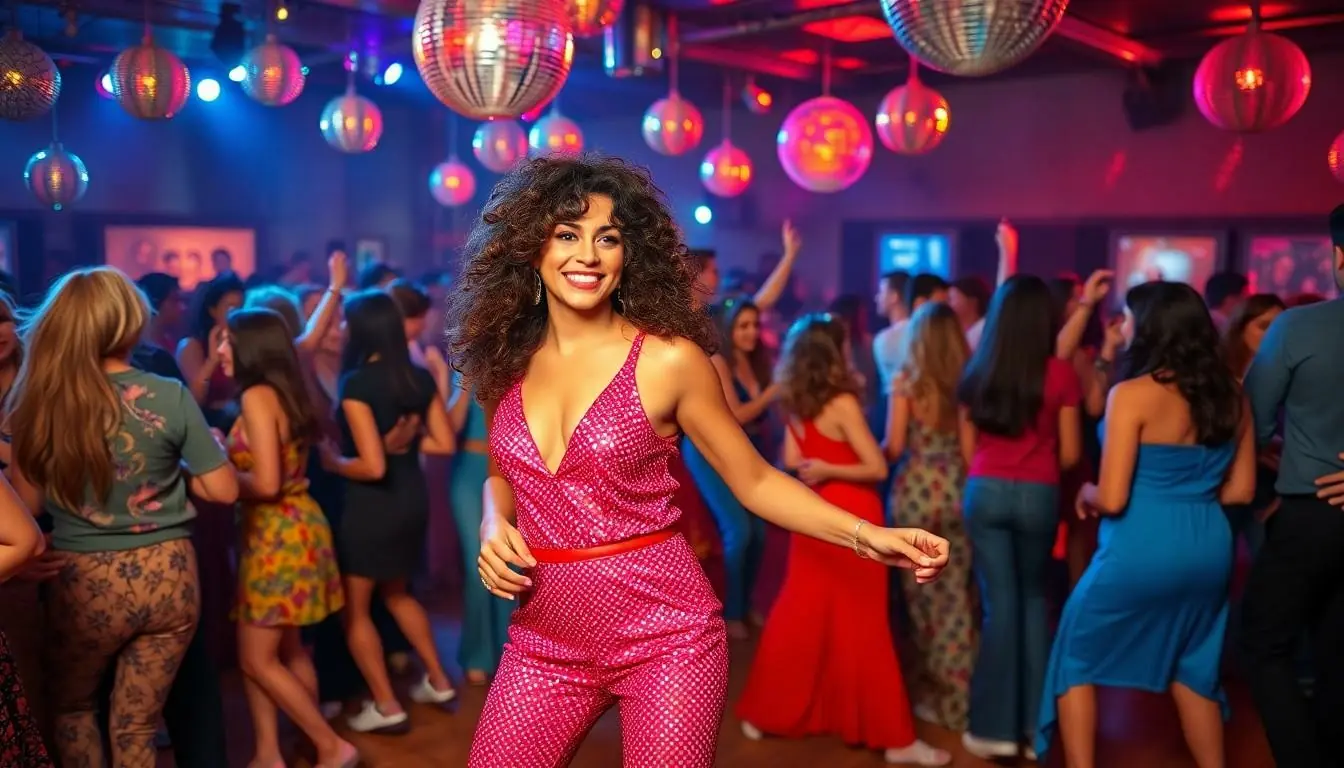The 1970s were a wild ride for pop music, a decade that danced its way into the hearts of millions. With disco balls spinning and rock anthems blaring, it was a time when bell bottoms were as essential as catchy hooks. Artists like Elton John and Fleetwood Mac ruled the charts, while the emergence of funky grooves turned dance floors into electric playgrounds.
But let’s not forget the quirky side of the ‘70s. Who could resist the charm of ABBA or the infectious beats of the Bee Gees? This era wasn’t just about music; it was a cultural revolution that shaped the sound of generations to come. So, buckle up as we take a nostalgic journey through the vibrant world of 70s pop music, where every note tells a story and every song is a ticket to a groovy good time.
Table of Contents
ToggleOverview of Pop Music in the 70s
Pop music in the 1970s reflected a dynamic period characterized by musical experimentation and cultural shifts. Artists such as Elton John dominated the charts with flamboyant styles and memorable performances. Funk elements and disco rhythms emerged, influencing the sound of the decade. The Bee Gees fostered the disco craze with tracks like “Stayin’ Alive,” which resonated in dance clubs worldwide.
Female artists gained prominence during this era. Artists like Carole King delivered powerful lyrics and melodies, achieving widespread acclaim with albums such as “Tapestry.” Additionally, ABBA brought a unique blend of pop and catchy harmonies, capturing the hearts of listeners globally.
This period also marked a fusion of genres. Soft rock gained popularity, with bands like Fleetwood Mac releasing iconic albums such as “Rumours.” Groundbreaking collaborations between pop, rock, and soul paved the way for future music trends.
Music festivals became cultural landmarks, celebrating community and creativity. Events like Woodstock highlighted the growing influence of pop music and its ability to unite diverse audiences. Innovations in music production also played a role; synthesizers started to reshape the soundscape.
The 1970s left an indelible mark on the music industry. Trends from this decade continue to influence contemporary artists. While nostalgia drives the ongoing appreciation for 70s pop, it remains evident that this era significantly shaped the evolution of popular music.
Key Artists and Bands

The 1970s showcased remarkable talent within the pop music scene. Iconic solo artists and influential bands emerged, each contributing significantly to the decade’s vibrant sound.
Iconic Solo Artists
Elton John dominated the charts with his flamboyant performances and chart-topping hits like “Rocket Man” and “Your Song.” He captivated audiences through his unique blend of rock and pop. Carole King made waves in the industry with her landmark album “Tapestry,” which featured timeless tracks like “It’s Too Late” and “I Feel the Earth Move.” Both artists displayed immense songwriting prowess and left an indelible mark on pop culture.
Influential Bands
Fleetwood Mac revolutionized soft rock with their iconic album “Rumours,” producing unforgettable songs like “Go Your Own Way” and “Dreams.” The Bee Gees propelled the disco movement, contributing to the dance floors with hits like “Stayin’ Alive” and “Night Fever.” ABBA’s infectious melodies and harmonies, seen in songs like “Dancing Queen” and “Mamma Mia,” captivated global audiences, establishing their legacy in pop music. Each band defined the 1970s through their innovative sounds and engaging performances.
Significant Trends and Styles
Pop music in the 1970s displayed a variety of notable trends and styles that shaped the music landscape. Unique fusions and cultural influences characterized the decade, leading to a dynamic and innovative sound.
Experimentation with Genres
Artists embraced musical experimentation during the 70s. Rock bands integrated elements of funk and soul, creating a fresh soundscape. Many artists, like David Bowie, pushed boundaries with glam rock, while others, such as the Eagles, blended country with rock. Soft rock emerged as a dominant genre, with warm melodies securing widespread popularity. The inclusion of synthesizers also revolutionized pop music, incorporating electronic sounds that defined hits from artists like Kraftwerk. Such diversity of genres expanded the horizons of what pop music could achieve and deeply influenced subsequent musical trends.
Emergence of Disco
The disco movement exploded in the 1970s, significantly transforming the music scene. Clubs dedicated to this genre appeared in urban settings, inviting people to dance and enjoy the infectious rhythms. Artists like the Bee Gees became synonymous with disco, producing chart-topping hits that dominated the airwaves. Notable songs, including “Stayin’ Alive” and “Disco Inferno,” fueled the craze and encouraged the rise of dance culture. Additionally, disco fashion made bold statements, from glittery outfits to platform shoes, reflecting the era’s vibrant spirit. This genre not only defined a moment in time but also set the stage for future developments in pop and dance music.
Cultural Impact of Pop Music in the 70s
Pop music in the 1970s had a profound cultural impact, influencing attitudes, fashion, and social movements. The genre reflected the decade’s values, addressing issues like love, freedom, and individuality.
Influence on Society
Society experienced a shift as pop music became a voice for change. Artists like Elton John and Carole King addressed themes of personal expression and social awareness. The rise of disco fostered inclusiveness, welcoming diverse communities to nightclubs. Music’s ability to unite people was evident in festivals, like Woodstock, that encouraged peace and creativity. Popular songs often prompted conversations about gender roles and sexuality, contributing to evolving societal norms. Furthermore, the glam rock movement pushed boundaries around gender representation in music.
Legacy and Lasting Effects
The legacy of 1970s pop music continues to resonate today. Influences from this era shape contemporary artists across genres, including pop, rock, and dance music. Iconic albums like Fleetwood Mac’s “Rumours” remain benchmarks for songcraft and production quality. Musical techniques such as synthesizers became more prevalent in later decades, showcasing the era’s innovative spirit. Music from the 70s laid the groundwork for music videos, which transformed how artists connect with audiences. Cultural motifs from this time period persist in fashion, dance, and music, demonstrating the long-lasting significance of this vibrant decade.
The 1970s marked a pivotal moment in pop music that continues to influence artists and genres today. With its rich tapestry of sounds and styles the decade fostered creativity and innovation. The emergence of iconic artists and groundbreaking albums reshaped the music landscape while addressing cultural shifts and social movements.
Pop music in the 70s not only entertained but also served as a catalyst for change. It embraced diversity and inclusivity inviting listeners to celebrate individuality and freedom. As the echoes of this vibrant era linger on in contemporary music the legacy of 70s pop remains a testament to its enduring impact on culture and society.



